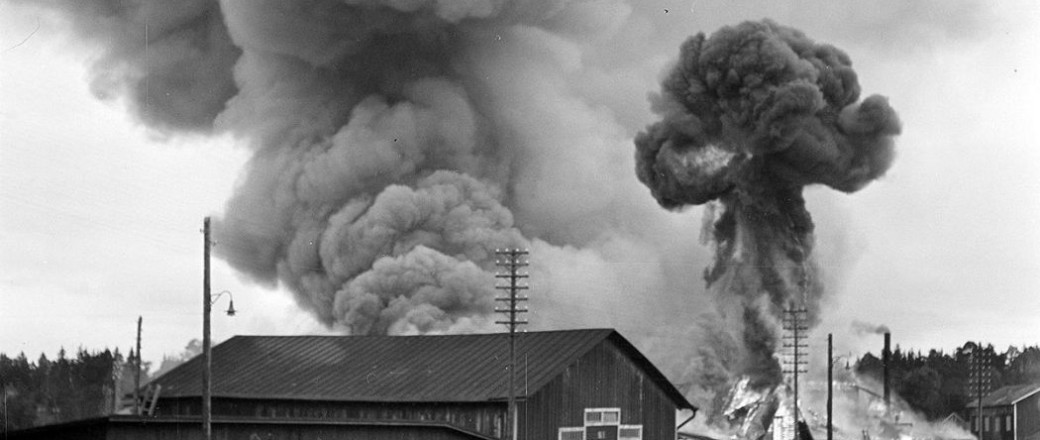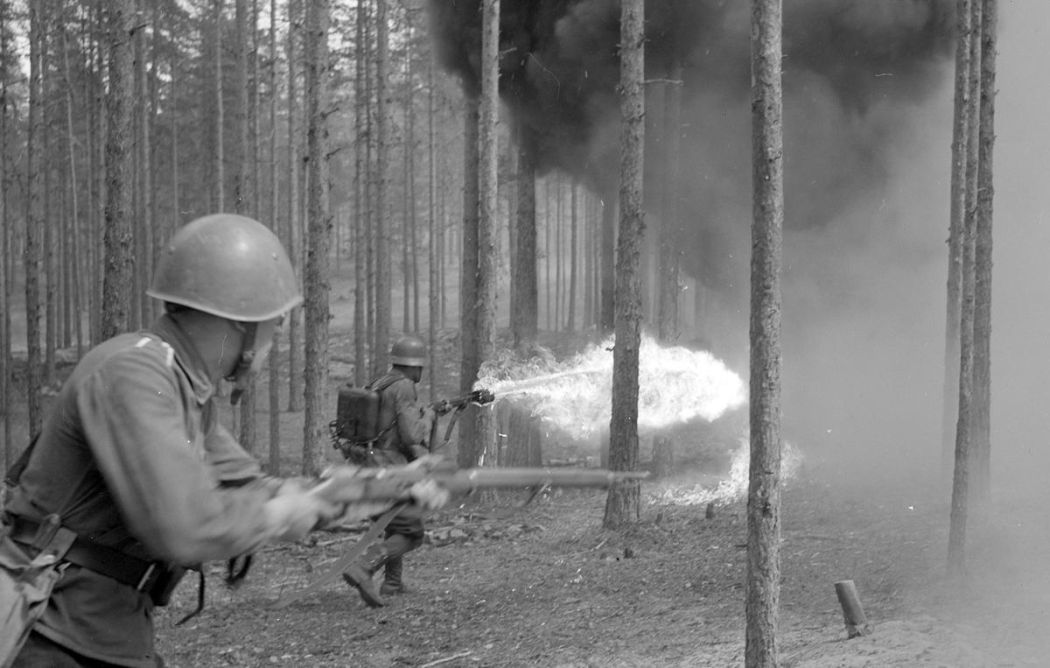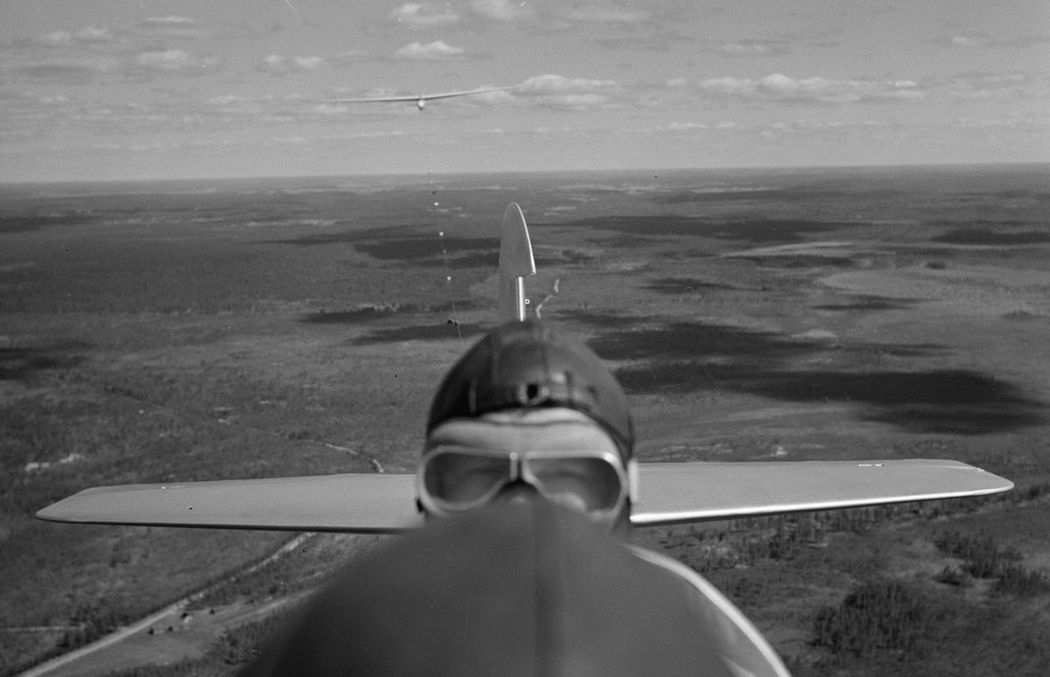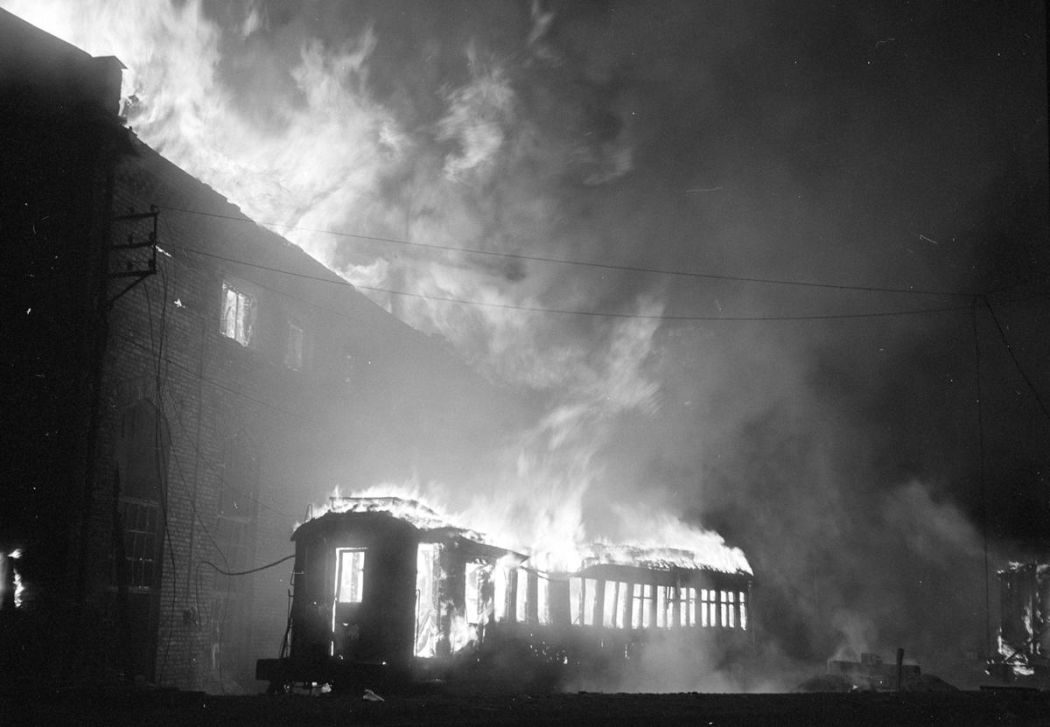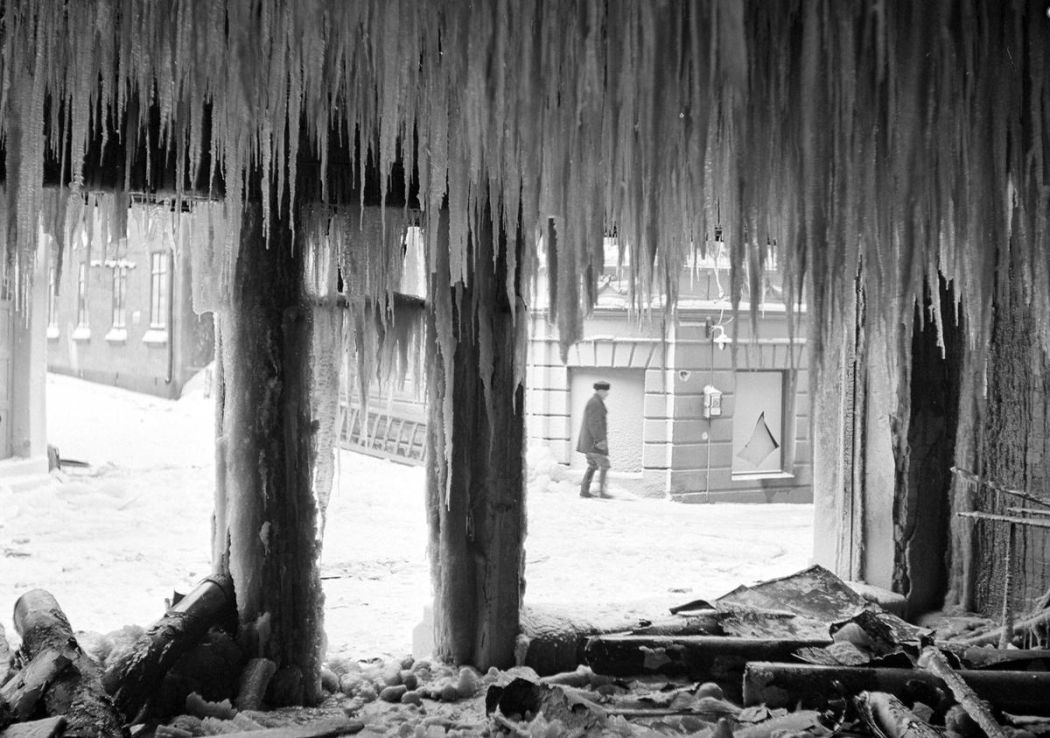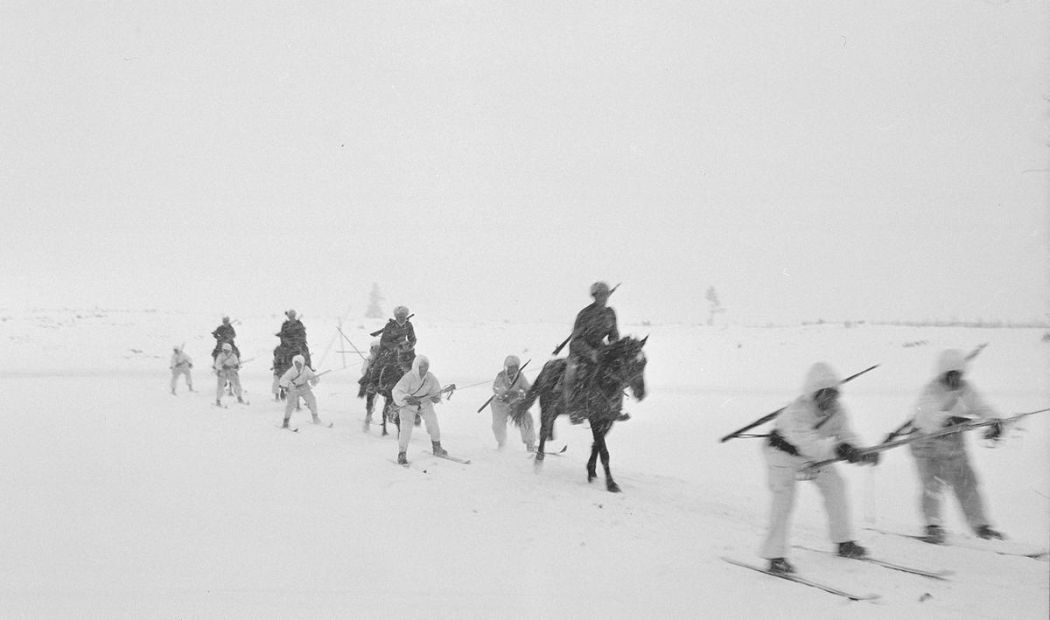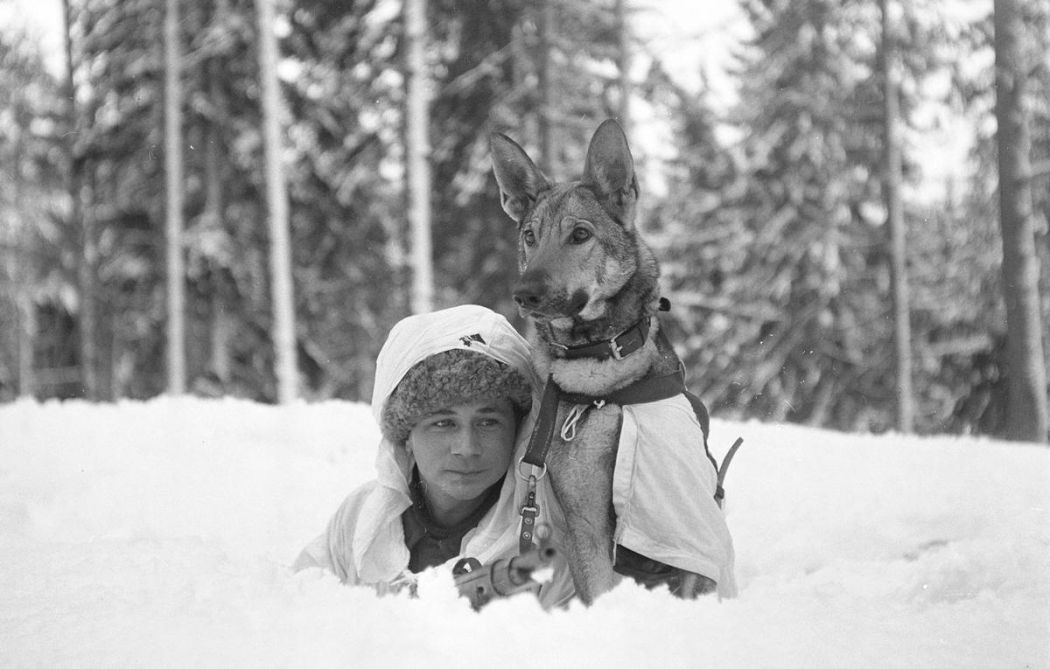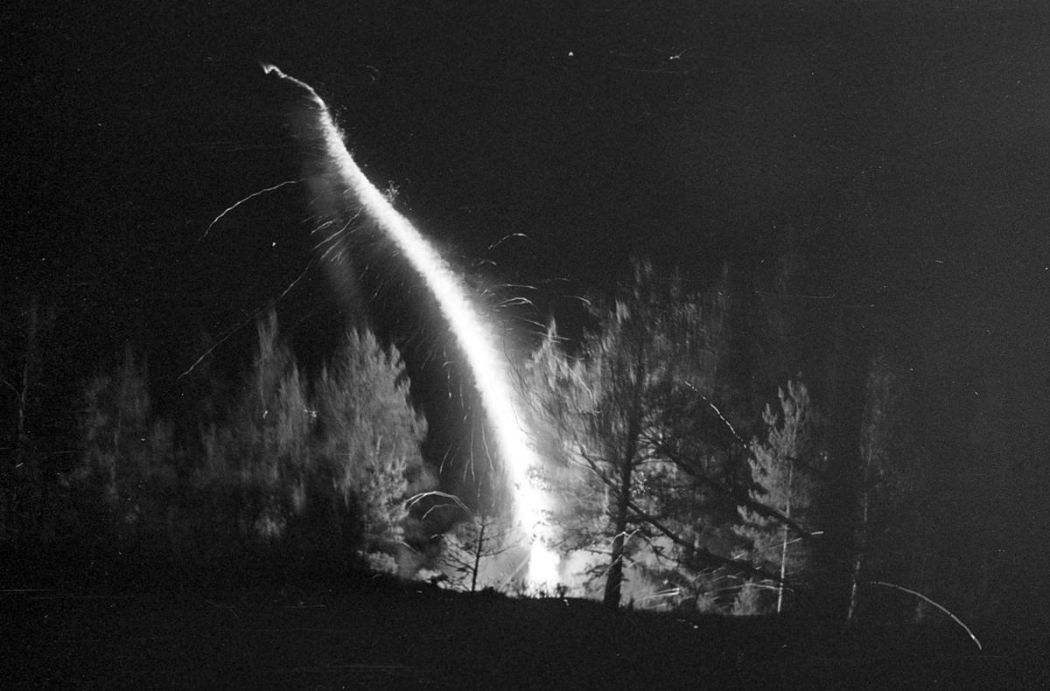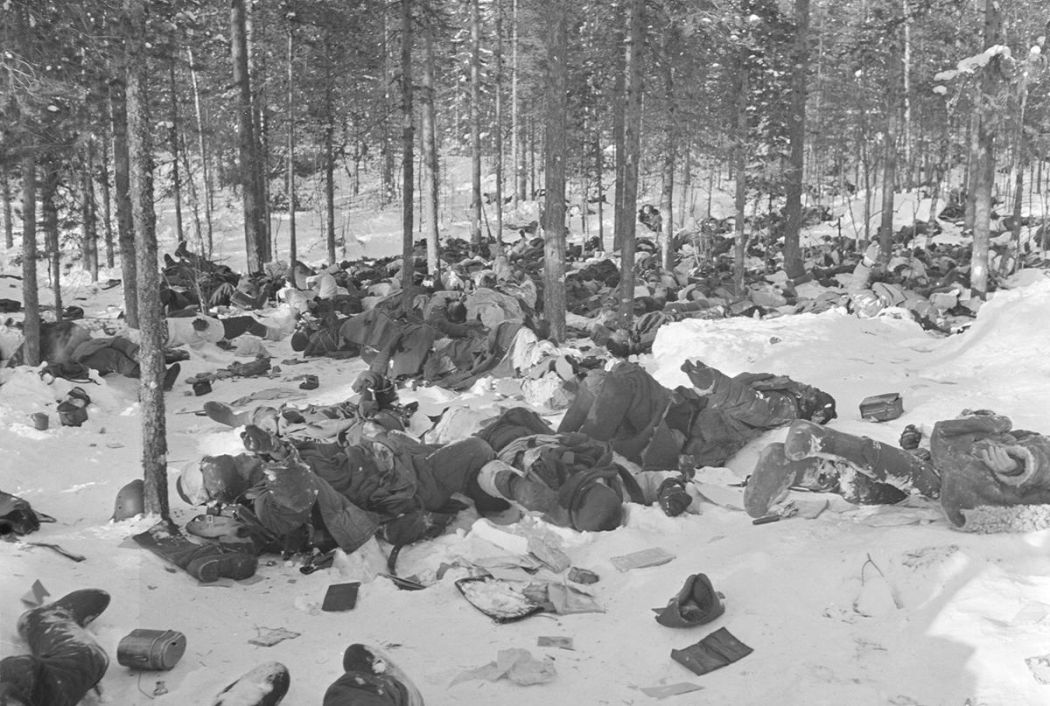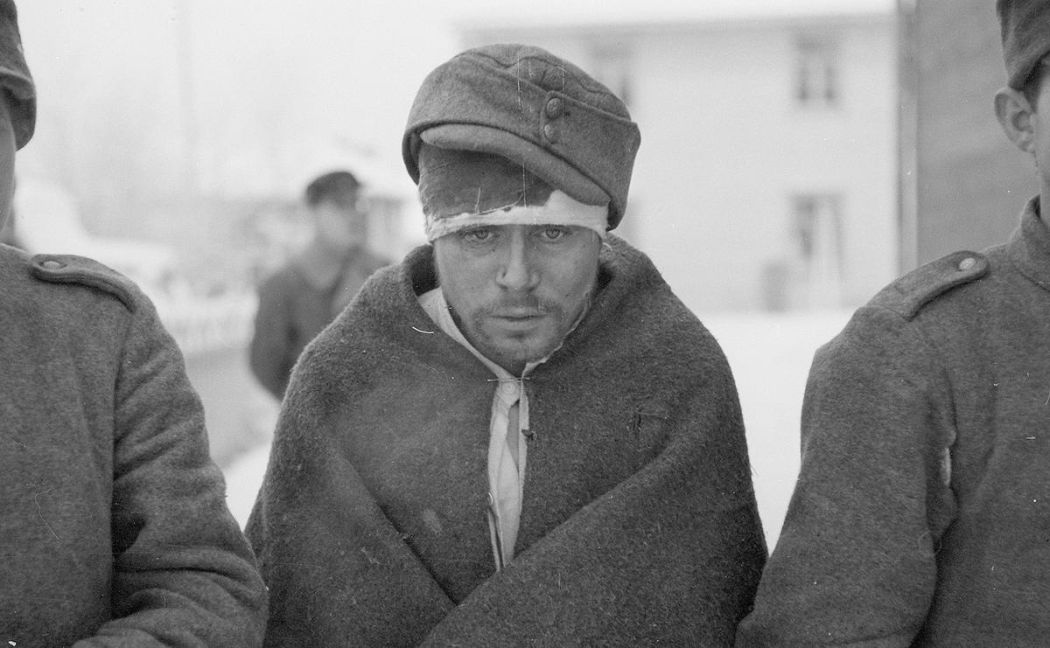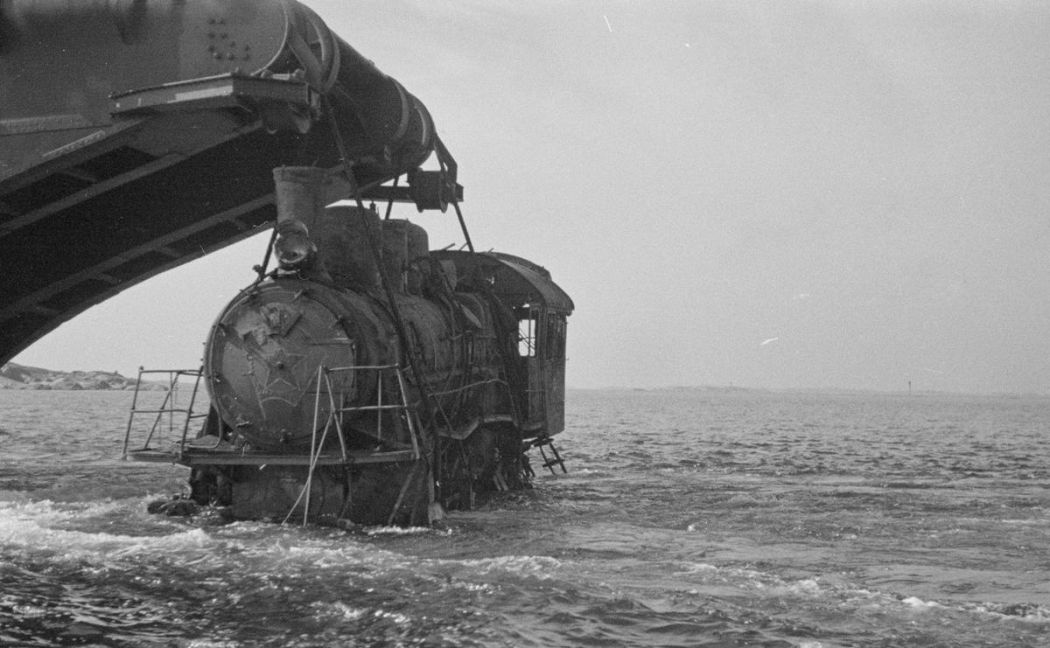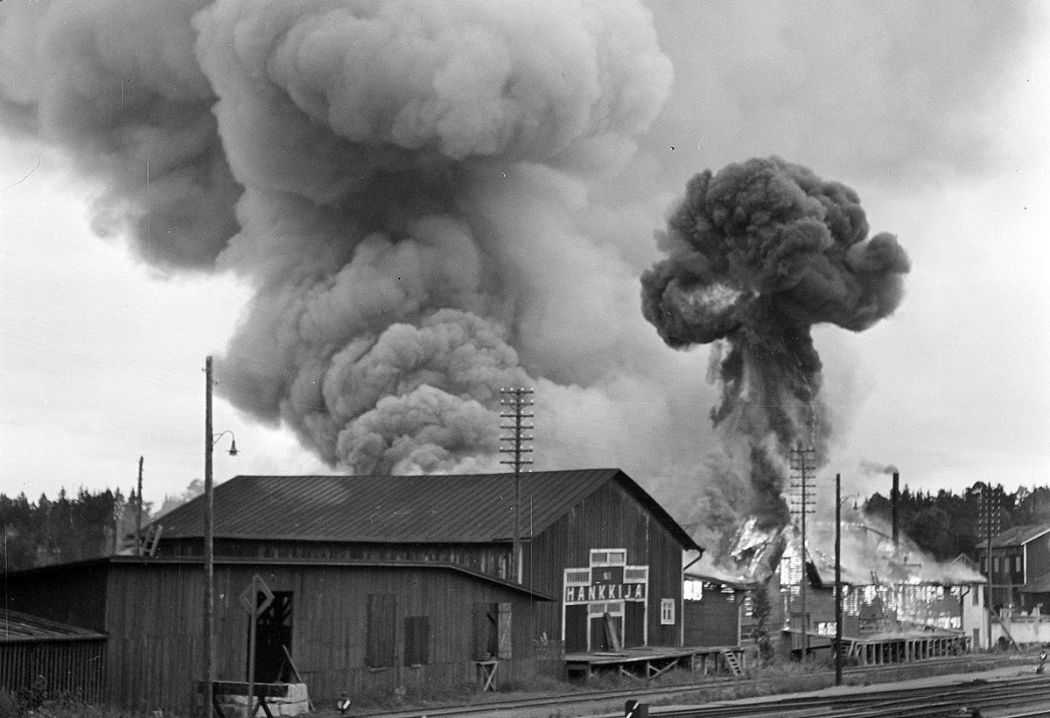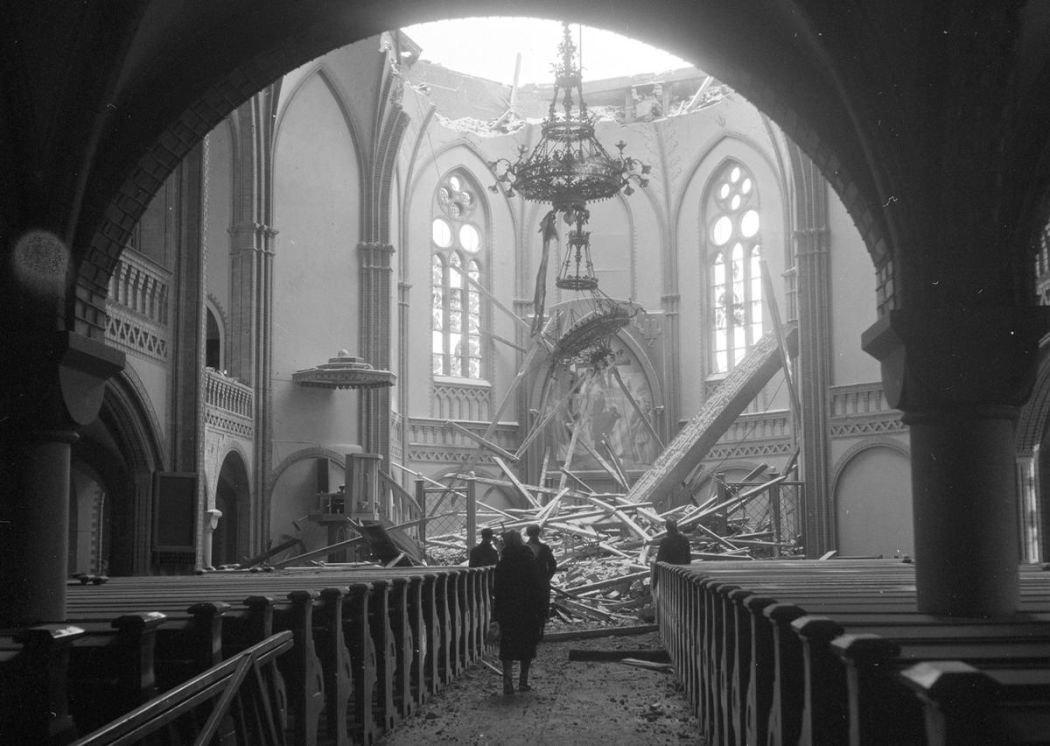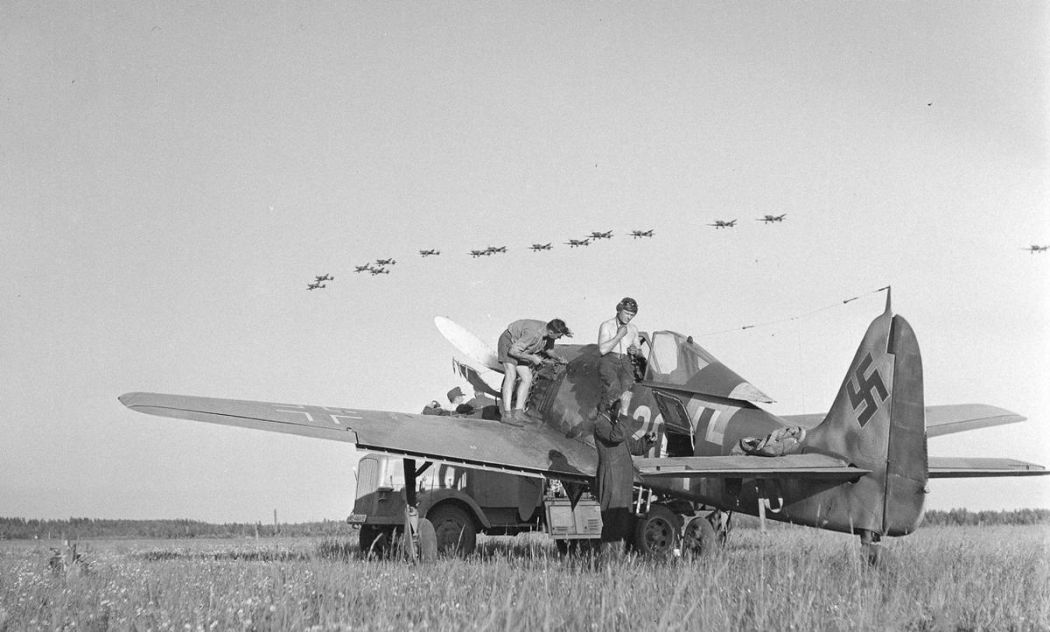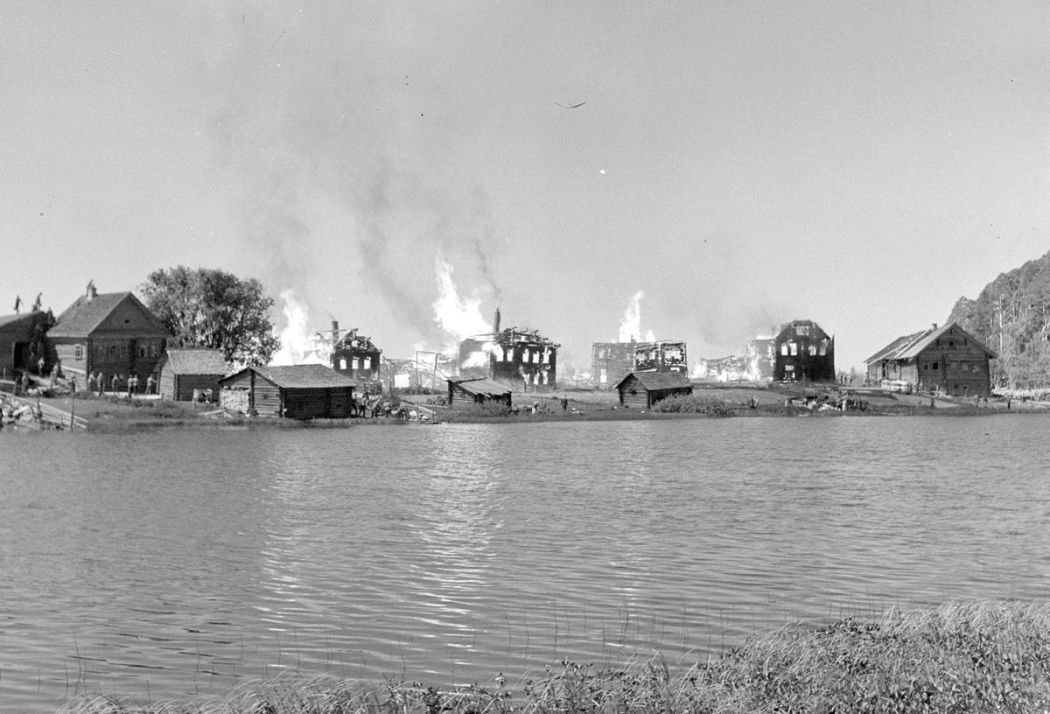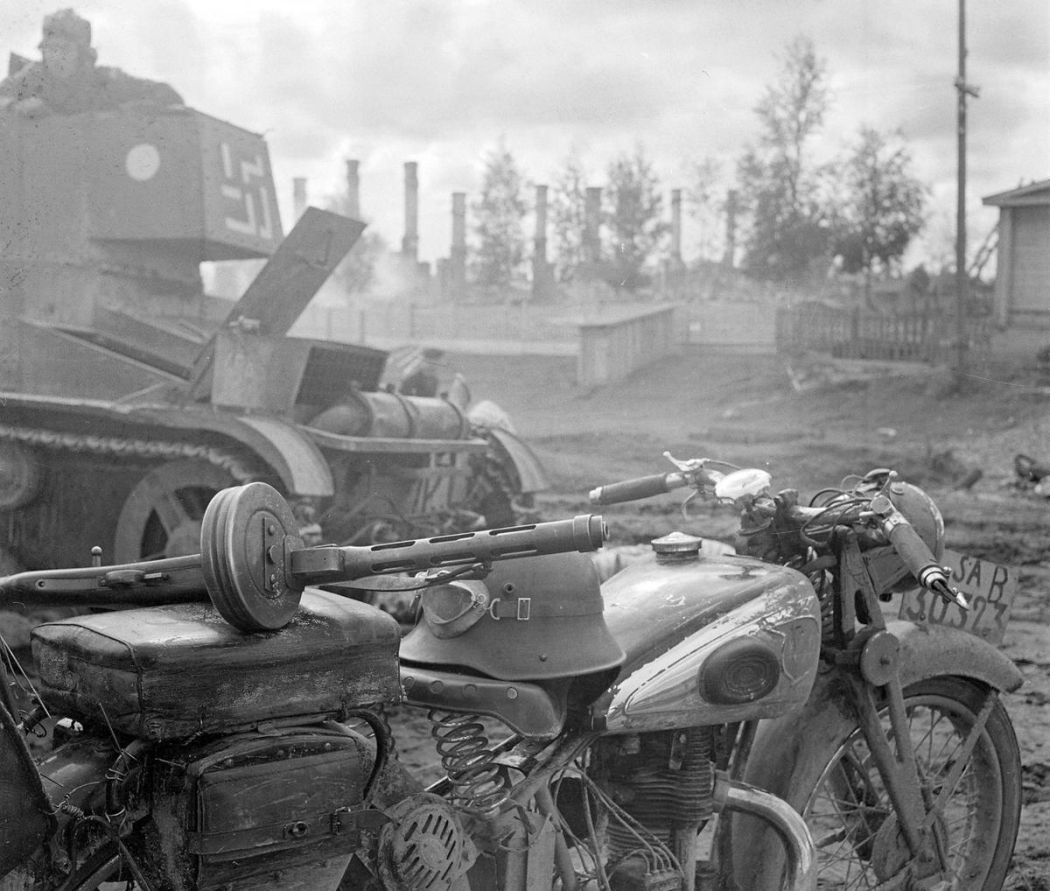Finland during World War II encompasses three major conflicts. The first two of these – the defensive Winter War in 1939–1940, and the Continuation War alongside the Axis Powers in 1941–1944 – were waged against the Soviet Union. The third one, the Lapland War in 1944–1945, followed the signing of an armistice agreement with the Allied Powers, which stipulated expulsion of German forces from Finnish territory.
By the end of hostilities, Finland managed to defend its independence, but had to cede nearly 10% of its territory, including its second largest city, Viipuri, and pay out a large amount of war reparations to the Soviet Union. As a result of this territorial loss, many Finnish Karelians fled or were evacuated from their homes, relocating to areas that remained within the borders of Finland.
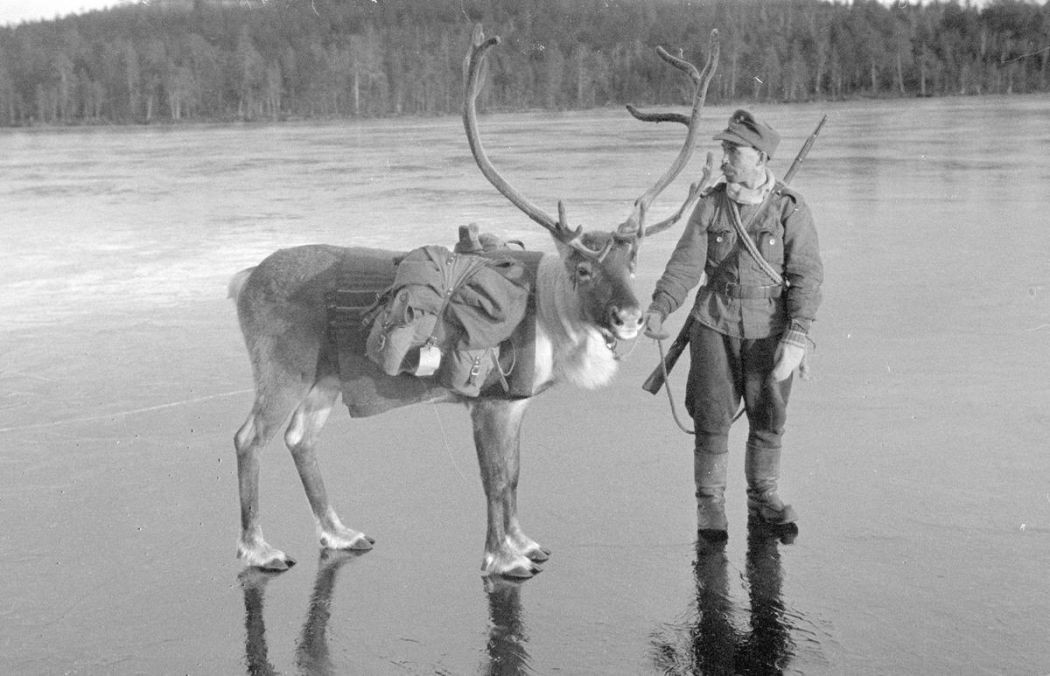
A soldier with a pack Reindeer, on slippery ice, near the tiny village of Nautsi, in northern Lapland, Finland, on October 26, 1941. # SA-kuva

Propeller-driven snowmobile near Haapasaari, Finland. The swastika was used as the official national marking of the Finnish Air Force and Tank Corps between 1918 and 1945. # SA-kuva
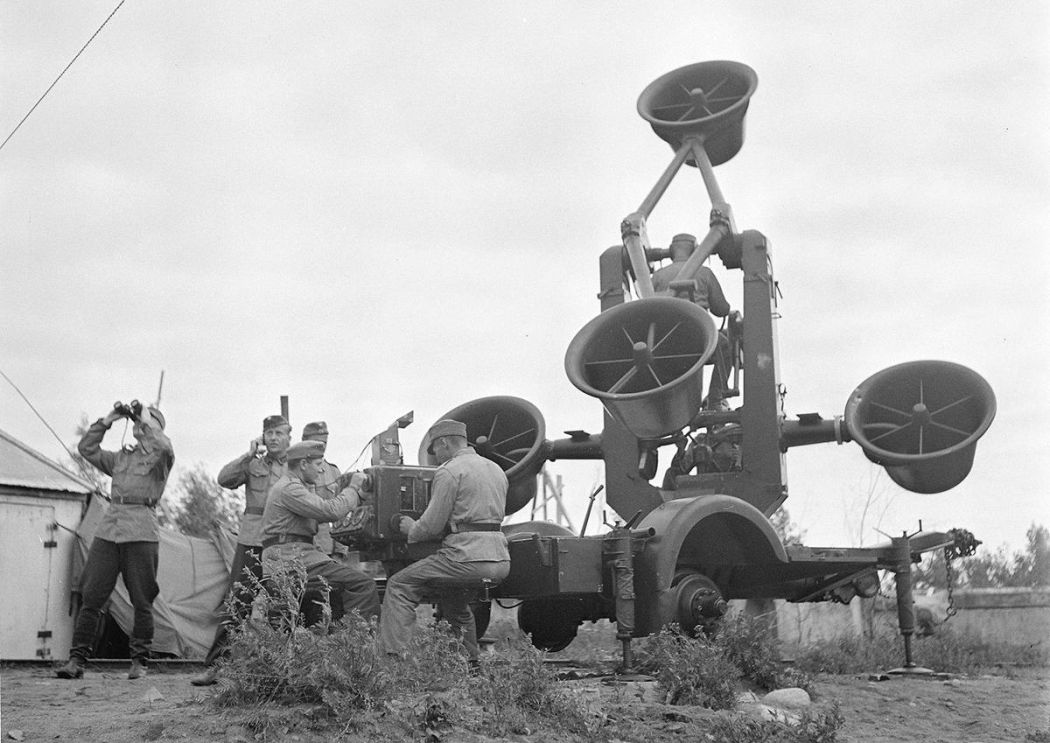
Looking out toward approaching aircraft with binoculars and listening with a huge acoustic locator. # SA-kuva
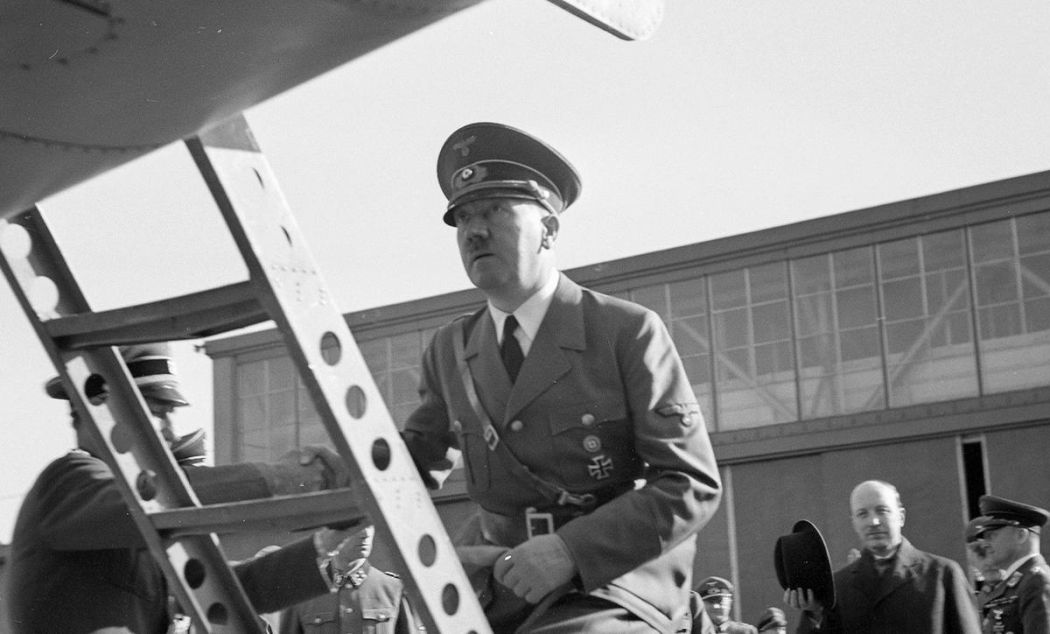
Hitler’s visit to Finland. Adolf Hitler, leader of Nazi Germany, made a brief visit to Finland in June of 1942. # SA-kuva
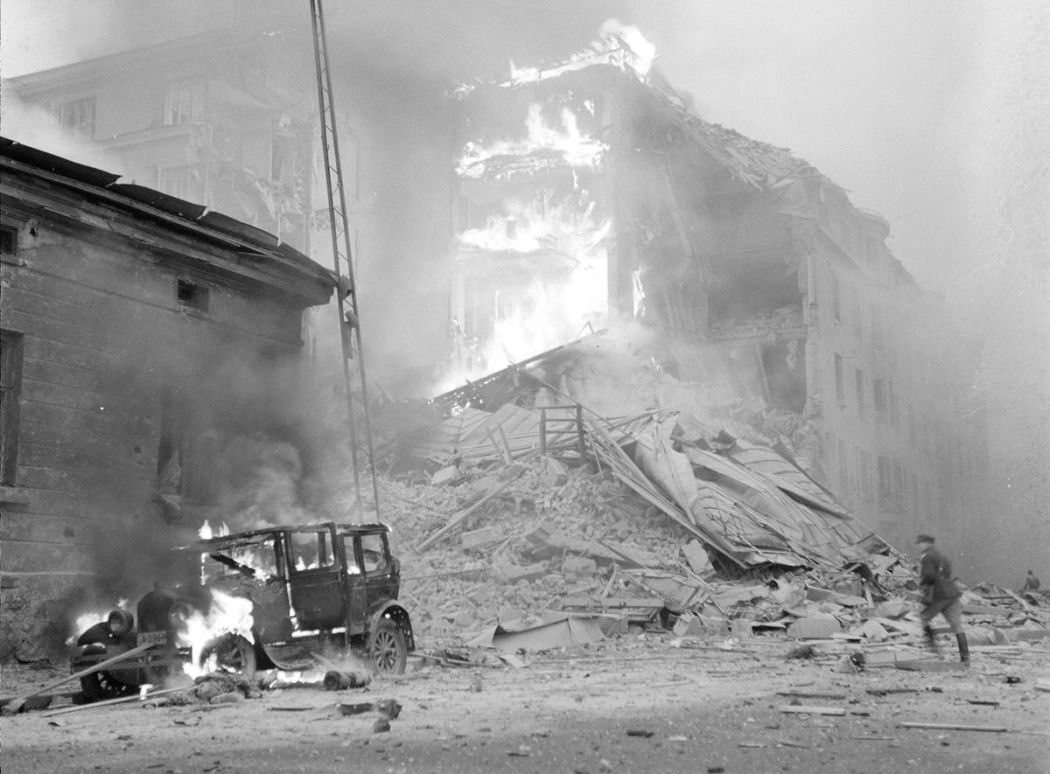
The Soviet bombing of Helsinki, on November 30, 1939. On this day, the Soviet Union invaded Finland with 21 divisions, totaling some 450,000 troops. # SA-kuva
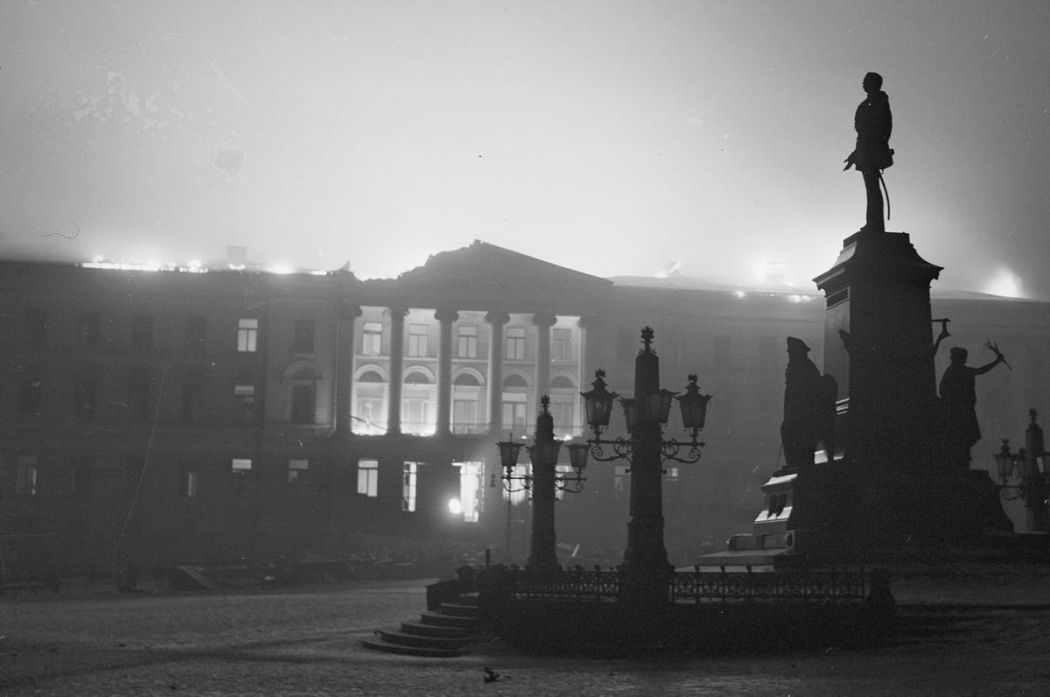
The bombing of Helsinki. The main building of Helsinki University, on Senate Square, burns during the night. This scene today, on Google Maps. # SA-kuva
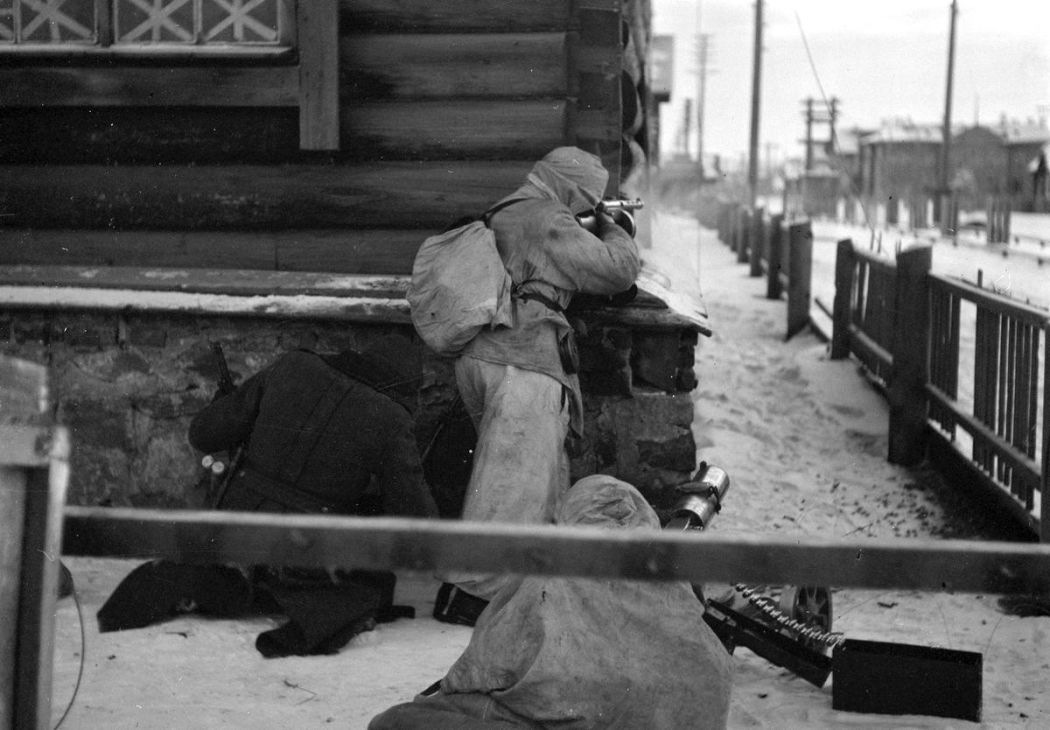
Street fighting in Medvezhyegorsk, Russia. The town was occupied by Finland for three years. # SA-kuva
via Finnish Wartime Photograph Archive

